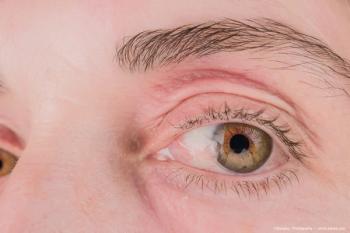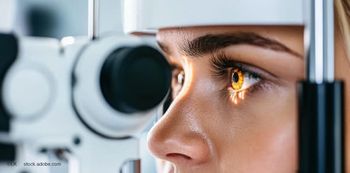
Compound has potential in retinoblastoma
A new compound shows potential as a novel targeted therapy for retinoblastoma. While studies are still in the preliminary stages, the compound known as sd-rxRNA was able to penetrate all cell layers of the retina and was taken up by tumor cells within 24 hours of intravitreal administration, said Michael Byrne, PhD.
Seattle-A new compound shows potential as a novel targeted therapy for retinoblastoma. While studies are still in the preliminary stages, the compound known as sd-rxRNA was able to penetrate all cell layers of the retina and was taken up by tumor cells within 24 hours of intravitreal administration, said Michael Byrne, PhD.
“The compound has shown robust cellular uptake in virtro and in vivo,” said Dr. Byrne, a scientist at RXi Pharmacueticals in Boston. “Not only do we see uptake in vitro, but it correlates well with the in vivo uptake.”
There was full penetration in the eye, and the compound exhibited dose dependent target specific silencing in the tumor, Dr. Byrne said. The compound also did not damage the retina.
These novel compounds, which are being developed by RXi Pharmaceuticals, have been termed “self-delivering” RNAi compounds or sd-rxRNA. They are hybrid oligonucleotide agents, and their proprietary combination of chemical modifications allows for spontaneous cellular uptake of sd-rxRNA without the need for a delivery vehicle.
The goal is to use the sd-rxRNA platform to develop compounds against novel retinoblastoma therapeutic targets, and previous research showed that sd-rxRNAs in the eye resulted in spontaneous cellular uptake in the retina along with a statistically significant reduction of target mRNA levels for up to 21 days.
In the current study, the compound in vitro mRNA silencing was evaluated in retinoblastoma cell lines along with in vivo uptake by human retinoblastoma cells in a mouse model. Retinoblastoma cell lines RB176, RB177, and Y79 were treated with sd-rxRNA targeting the PPIB gene for 48 hours, after which PPIB mRNA levels were analyzed.
There was dose-dependent target specific silencing in RB176, RB177, and Y79 in the retinoblastoma. In a mouse model, sd-rxRNA was visible in tumor cells in the subretinal space and in the vitreous 24 hours after an intravitreal injection.
“We saw no leakage from the retina through 3 weeks of treatment, and there were no changes in retinal morphology after 4 weeks,” Dr. Byrne said. “ERG recordings revealed similar retina function following dosing with sd-rxRNA.”
For more articles in this issue of Ophthalmology Times Conference Brief,
Newsletter
Don’t miss out—get Ophthalmology Times updates on the latest clinical advancements and expert interviews, straight to your inbox.













































.png)


